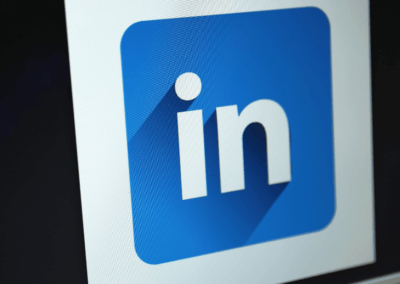Social media is everywhere. Tweet this, pin that, post this other thing. It’s inescapable, both for you and your company. However, social media isn’t something that needs to be feared. Rather, social media offers a large range of opportunities for your company, for both your Marketing and Sales teams, to create a predictable growth model for the future.
In 2014, according to the Pew Research Center, 52% of Internet users now use 2 or more social media platforms—up from just 42% in 2013! What this means for your company, is that you have more opportunities and more channels to work with to communicate with your audience. Leverage your target prospects’ “watering holes” and use social media to engage with them.
Below are a number of industry resources that we’ve curated for you that will offer a few tips, tricks, and best practices. You may have heard some before, but they’re worth repeating.
Examples of Leveraging Social Media
This first blog post, “How the Top Brands Use Social Media for Marketing,” from Business 2 Community, focuses on 4 specific examples of how companies have leveraged social media to increase brand recognition and increase overall profit. Though the companies this article focuses on, Red Bull, ADT, CableTV.com, and Oreo, are B2C companies, many of the principles and techniques they use can easily be transferred to a B2B company. This post offers some good examples of how social media can be used not only to reach a greater audience (through sharing, retweeting, etc.), but how much easier it can be to genuinely engage with this audience. At the end of the article, three “key steps” are offered for implementing your own social media strategy, which are repeated through some other content included below. These steps are:
- Identify social media channels effective in business marketing
- Monitoring your social media campaign
- Leverage on your target audience interest
Best Practices for Using Social Media
The “4 Best Sales Practices for Using Social Media” offered on Salesforce’s blog touches on some of the same ideas that Business 2 Community touches on, and as we’ll see, some of these are also reiterated in some more blogs to follow. Many of the tips and tricks offered throughout these blogs may seem repetitive, however, this just goes to show the effectiveness of them. This particular blog, however, focuses more on Selling with social media, rather than Marketing. The best practices offered by Salesforce are:
- Find the Right Channel
- Produce and Engage
- Show Your Value
- Persuade Them to Take Action
Just as Business 2 Community recommended identifying effective social media platforms, Salesforce recommends finding the right channel. Different words, but the same message: go where your customers are.
For another perspective, let’s turn to Forbes. In one article, contributor Kevin Harrington gives “5 Real Ways to Leverage Social Media — ‘Likes’ are not Profit.” Though this article focuses specifically on way to leverage social media, the author makes the claim that all-in-all, Marketing hasn’t changed all that much. Rather, “the heart of marketing will always remain the same, no matter what the mechanism is. It’s still all about connection”. So given this standpoint, the 5 tips offered are all practical ways to ensure that your Marketers are still focusing on connection, and focusing on the individual members of your target prospects.
Using Twitter and LinkedIn, Specifically
Okay, it seems like we have a pretty solid understanding of these tips and best practices, so its time to get a little more specific. Though you may already be familiar with Marketing and selling on Twitter and LinkedIn, it doesn’t hurt to refresh. Here is an infographic originally created by The Huffington Post, and republished by Hubspot: “A Simple Guide to Using Hashtags on Twitter [Infographic].” This particular infographic is targeted directly to small business owners, however, all the key takeaways are applicable to just about every industry engaging with customers on Twitter. So despite the unexpected sales pitch from American Express at the end, this infographic can help you get a handle on using #hashtags correctly.
Lastly, when implementing social media into your Marketing (and Sales) practices, Salesforce recommends that you “Think Strategy, Not Tactics to Generate More Leads & Become an Elite LinkedIn Marketer.” This article focuses on LinkedIn, but many of the principles can be applied elsewhere, whether you plan on engaging with customers on Facebook, Twitter, Pinterest, or elsewhere. Above all, this blog emphasizes the importance of having an overarching strategy for your social media, and not simply completing a checklist of things to do every day. This is also essential to achieve a strong social selling platform within your company. It’s all about creating the perfect strategy in order to create predictable growth.
This blog offers these 5 strategies to help focus your social media efforts:
- Your Social Media Presence Strategy
- Your Thought Leadership Strategy
- An Intelligent Prospecting Strategy
- Community Building and Engagement Strategy
- Lead Generation & Lead Engagement Strategy
But don’t be limited to just one of these strategies. Rather, given the pervasiveness of social media today, you can easily build your reputation as a thought leader, engage with leads, and help build a list of prospects all at the same time! After reading through some of these blogs, you’ll be more keen to know what to do, and what best practices to follow in order to create a social media strategy that fuels your predictable growth engine.
Like every aspect of a good business plan, leveraging social media requires an excellent strategy. Learn more about how to build that strategy to create a predictable revenue platform within your organization. Download our eBook here!
{{cta(‘57341862-17d3-4fcf-aa1c-b1baef929b4a’)}}



